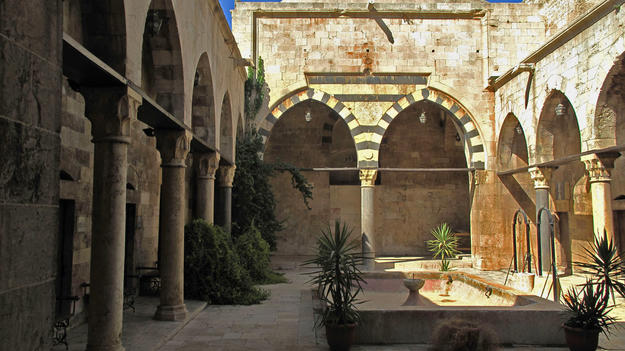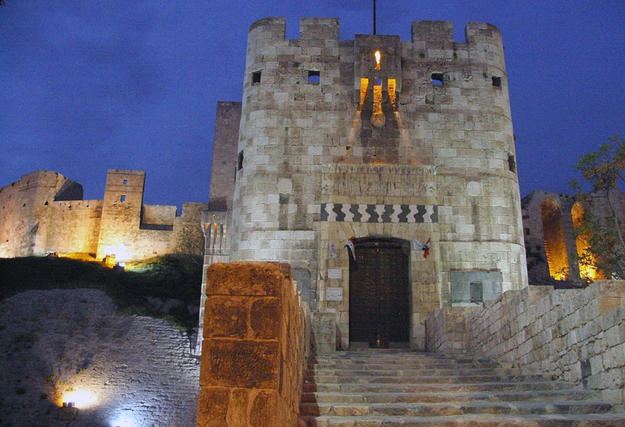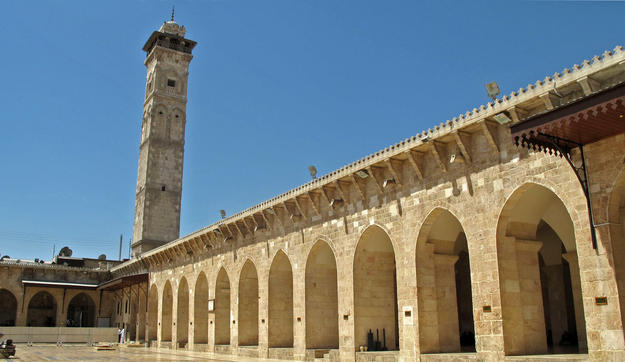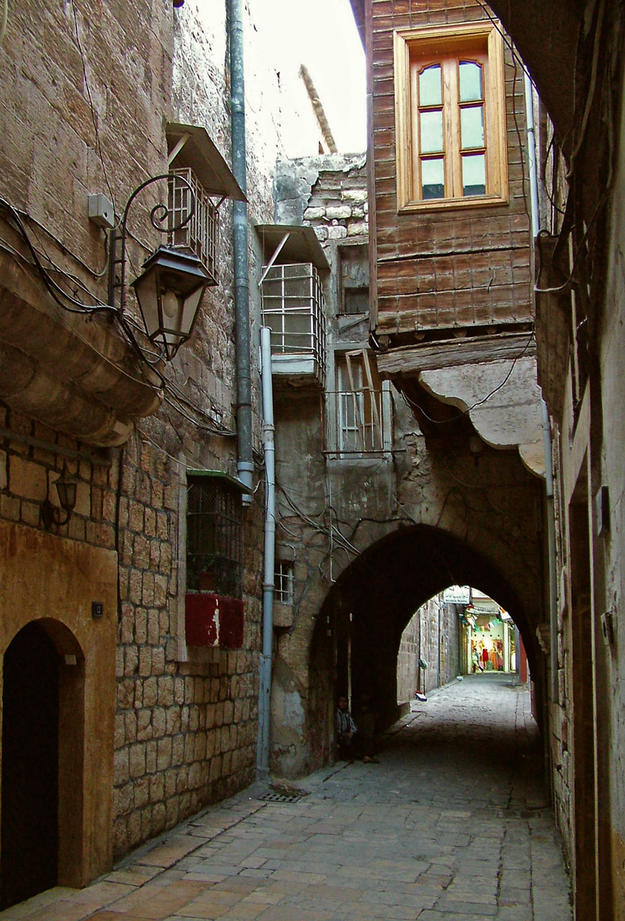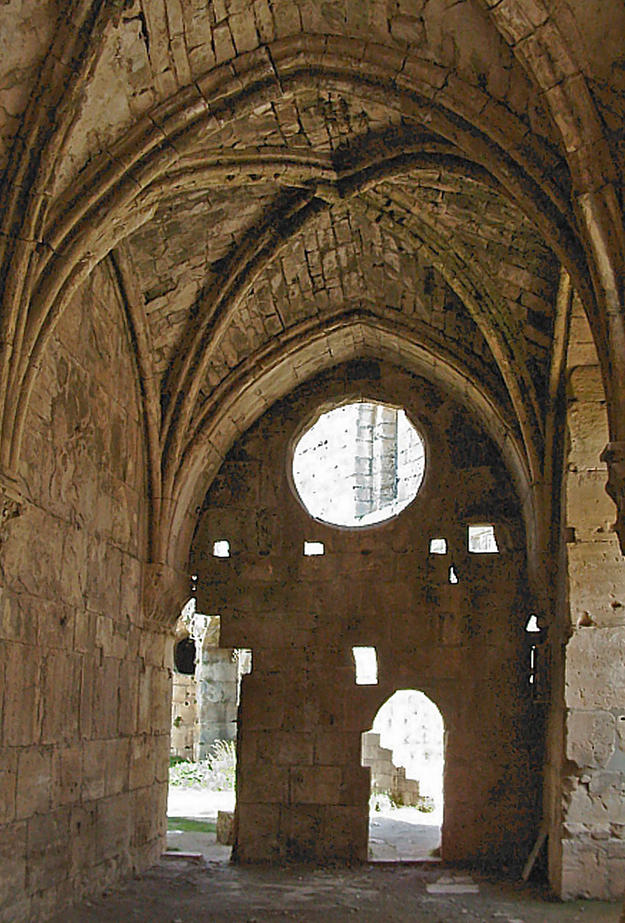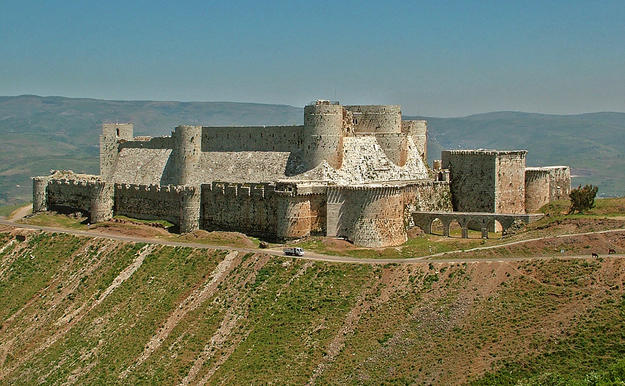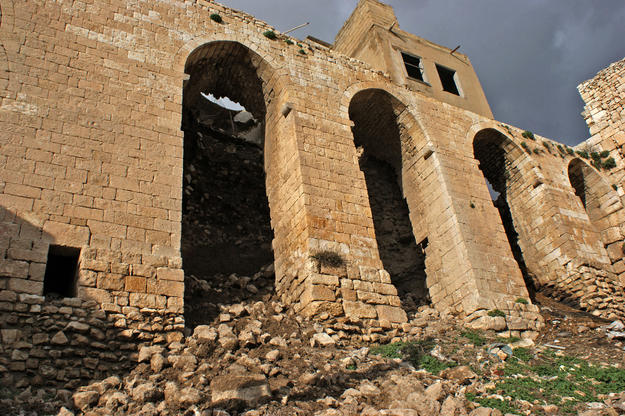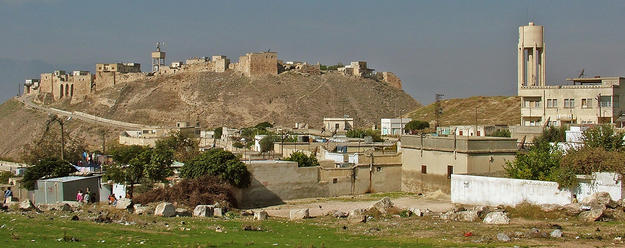Cultural Heritage Sites of Syria
2014 World Monuments Watch
Escalating violence in Syria has had devastating effects on the country’s cultural heritage site since 2011, from the ancient souk, or marketplace, in Aleppo, to the iconic Crac des Chevaliers—two castles that were built between the eleventh and thirteenth centuries as regional fortifications during the Crusades—to Qal’at al-Mudiq, an archaeological tell that forms part of the classical city of Apamea.
While the 2014 World Monuments Watch underscored the risks to the entirety of Syria’s heritage, the three aforementioned sites poignantly illustrate the dire threats. Aleppo’s seventeenth-century souk was engulfed by fire in September 2012, damaging over 150 shops and the livelihoods of their owners in the process. The Great Mosque of Aleppo was also damaged by the fire, and its minaret was destroyed in April 2013. In August 2012, the Ayyubid-era entrance to Aleppo’s historic citadel—one of the world’s oldest and largest castles, in use for at least 4,000 years—was partially destroyed by a missile attack. WMF had been working on the Aleppo Citadel with the Aga Khan Trust for Culture since 2002, on both conservation projects and site interpretation for visitors, but work was suspended in 2011, following the onset of civil conflict.
The destruction of Syria’s most significant and symbolic sites is of urgent and primary concern and has irreversible implications for the country’s historical and architectural legacy. These important cultural resources were included on the Watch in order to raise awareness of the threats to our shared heritage in times of war and conflict, and to galvanize the technical skills and resources of the international community in anticipation of a time when it is safe to return to the country. Other objectives included capacity-building through in-county collaboration between stakeholders, and enhancing the local stewardship of Syria’s rich architectural heritage.
Since the Watch
The armed conflict in Syria has led to a multifaceted response by international institutions in favor of Syrian cultural heritage, in the middle of ongoing humanitarian disaster. On March 1, 2014, UNESCO launched the Emergency Safeguarding of the Syrian Heritage project, funded by the European Union and in collaboration with other partners. After an expert meeting, held in Paris during May 26-28, 2014, UNESCO announced the creation of an observatory for the ongoing monitoring of the state of Syria’s cultural heritage, based in Beirut. The U.S. Department of State also announced funding for a one-year research project on the condition of cultural heritage and cultural institutions in Syria, in collaboration with the American Schools of Oriental Research (ASOR).
Since August 2014, weekly reports by the Syrian Heritage Initiative have detailed threats, conditions, and future restoration needs of Syrian cultural heritage sites. Throughout 2014, Syria’s Directorate-General of Antiquities and Museums (DGAM) also issued several reports on the condition of heritage places. In October 2014, Maamoun Abdulkarim, Director-General of DGAM in Syria, was awarded the first Cultural Heritage Rescue Prize at a ceremony in Venice. In November 2014, UNESCO hosted a training program for customs officers for Syria and bordering countries aimed at fighting trafficking of cultural objects. A training course on post-conflict conservation preparation for Syrian experts took place on November 24- December 11, 2014. Heritage for Peace hosted a four-day damage assessment course for staff of the Heritage Task Force of the Syrian Interim Government, a government formed by opposition groups in the Syrian civil war. The course was held in Gaziantep, Turkey, during November 23-26, 2014.
A high-level UNESCO conference held in Paris on December 3, 2014 focused on Iraq and Syria’s endangered heritage and cultural diversity. On December 22, 2014, the United Nations Institute for Training and Research (UNITAR) released an assessment of damage to heritage sites based on satellite images, indicating that 290 Syrian cultural heritage sites have been damaged or destroyed. Syria’s cultural heritage continues to be affected by the progressing war.

